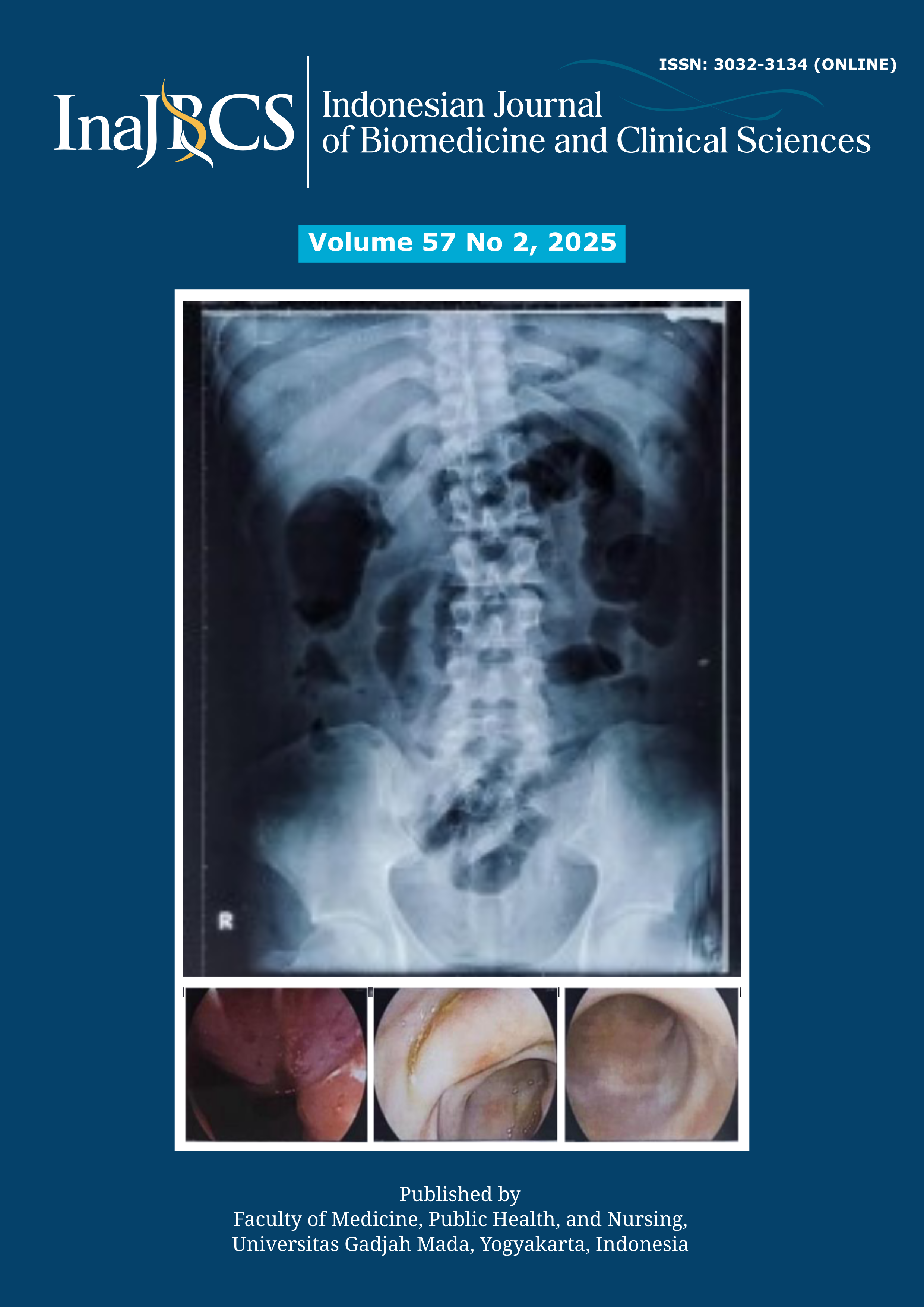The efficacy of combination of oral antioxidants and topical retinoic acid versus topical retinoic acid monotherapy in mild acne vulgaris patients
Abstract
Acne vulgaris (AV) is a chronic inflammatory disorder of the pilosebaceous follicle with multifactorial pathogenesis and pleiomorphic clinical manifestations constituting comedones, papules, pustules, nodules, and cysts. Oxidative stress has been reported to contribute in AV pathogenesis. This phenomenon rationalizes antioxidant supplementation as an adjuvant therapy for AV management. Four cases of 22 to 23 yo women with complaints of worsening facial acne for 1 to 6 mo. Initially, acne lesions appeared as skin-colored papules, which increased in number, became reddish papules and pustules, and extended to the jaw and chin. Lesions were accompanied by temporary itching and pain. Dermatological examination revealed multiple circumscribed discrete erythematous papules, miliar to lenticular in size, comedones (+), and pustules (+), with total lesions <30. According to the Lehmann criteria, patients were diagnosed as mild AV. All patients were treated with 0.025% topical retinoic acid cream, while the other two patients received additional oral antioxidant supplementations (zinc and ɑ-lipoic acid) and were followed up every two weeks. Two cases who received additional oral antioxidant supplementations (Group A) exhibited an earlier and higher clinical improvement, characterized by a reduction in the number of lesions on each follow up, till the current report. Oxidative stress in AV pathogenesis causes microenvironment alteration that favours colonization of Cutibacterium acnes. Together with the increase in sebum production, it stimulates the release of pro-inflammatory cytokines, such as interleukin (IL)-1α, IL-8, and tumor necrosis factor-α (TNF α), contributing to the inflammatory response. Antioxidant supplementation plays a role in suppressing the process of lipid peroxidation and inhibiting the expression of pro-inflammatory cytokines. Comprehensive management of AV is based on pathogenesis and the role of oxidative stress. An earlier and higher clinical improvement reduction was noted in Group A, patients who received a combination of 0.025% topical retinoic acid cream and oral antioxidant supplementation.
References
Goh C, Cheng C, Agak G, Zaenglein AL, et al. Acne vulgaris. In: Kang S, Amagai M, Bruckner AL, et al, editors. Fitzpatrick’s Dermatology 9th eds. New York: McGraw Hill Companies. 2019. p.1391-8.
Heng AHS, Chew FT. Systematic review of the epidemiology of acne vulgaris. Sci Rep, 2020; 10(1):5754.
https://doi.org/10.1038/s41598-020-62715-3
Auffret N, Claudel JP, Leccia MT, Ballanger F, Dreno B. Novel and emerging treatment options for acne vulgaris. Eur J Dermatol, 2022; 32(4):451-8.
https://doi.org/10.1684/ejd.2022.4306
Puspita F, Jusuf NK, Yosi A. Plasma malondialdehyde levels related to acne vulgaris severity. J Gen Proced Dermatol Venereol Indones, 2021; 5(3):147-51.
https://doi.org/10.19100/jdvi.v5i3.262
Ali SS, Ahsan H, Zia MK, Siddiqui T, Khan FH. Understanding oxidants and antioxidants: Classical team with new players. J Food Biochem, 2020; 44(3):e13145.
https://doi.org/10.1111/jfbc.13145
Kardeh S, Moein SA, Namazi MR, Kardeh B. Evidence for the important role of oxidative stress in the pathogenesis of acne. Galen Med J, 2019; 8:e1291.
https://doi.org/10.31661/gmj.v0i0.1291
Popa GL, Mitran CI, Mitran MI, Tampa M, Matei C, Popa MI, et al. Markers of oxidative stress in patients with acne: a literature review. Life (Basel), 2023; 13(7):1433.
https://doi.org/10.3390/life13071433
Mulianto N. Malondialdehid sebagai penanda stres oksidatif pada berbagai penyakit kulit. Cermin Dunia Kesehatan, 2020; 47(1):39-44.
https://doi.org/10.55175/cdk.v47i1.13
Gaber HAA, Abozied AAH, Abd-Elkareem IM, El-Shazly YNY. Serum zinc levels in patients with acne vulgaris and its relation to the severity of disease. Egypt J Hosp Med, 2019; 75(5):2845-8.
https://doi.org/10.21608/EJHM.2019.33005
Vaidya T, Hoffman L, Chapas A. Evaluating common ingredients contained in dietary acne supplements: an evidence-based review. J Clin Aesthet Dermatol, 2024; 17(3):33-41.
Butool F, Mohammed A, Syed PA, Mohammed RA. Role of serum zinc and copper levels in patients with acne vulgaris. J Orofac Res, 2019; 8(4):71-5.
Kazeminejad A, Hajheydari Z, Taghian SS, Gholizadeh N. Serum zinc, selenium, and vitamin D levels in patients with acne vulgaris: a case-control study. J Cosmet Dermatol, 2024; 23(12):4249-54.
https://doi.org/10.111/jocd.16494
Yee BE, Richards P, Sui JY, Marsch AF. Serum zinc levels and efficacy of zinc treatment in acne vulgaris: A systematic review and meta-analysis. Dermatol Ther, 2020; 33(6):e14252.
https://doi.org/10.1111/dth.14252
Lee WJ, Eun DH, Kim SM, Kim JY, Jang YH, Lee SJ. Anti-inflammatory and antioxidative effects of alpha lipoic acid on cultured human sebocytes. Ann Dermatol, 2019; 31(1):84-7.
https://doi.org/10.5021/ad.2019.31.1.84
Haghighatdoost F, Hariri M. The effect of alpha-lipoic acid on inflammatory mediators: a systematic review and meta-analysis on randomized clinical trials. Eur J Pharmacol, 2019; 849:115-23.
https://doi.org/10.1016/j.ejphar.2019.01.065
Superti F, Russo R. Alpha-lipoic acid: biological mechanisms and health benefits. Antioxidants, 2024; 13(10):1228.
https://doi.org/10.3390/antiox13101228
Pei Y, Liu YY, Sun M, Zheng J, Zhou TT, Wang B, dkk. Beneficial effects of pioglitazone and α-lipoic acid in patients with polycystic ovaries syndrome. Eur Rev Med Pharmacol Sci, 2023; 27(15):7118-26.
https://doi.org/10.26355/eurrev_202308_33285
Kim K, Kim J, Kim H, Sung GY. Effect of α-lipoic acid on the development of human skin equivalents using a pumpless skin-on-a-chip model. Int J Mol Sci, 2021; 22(4):2160.
https://doi.org/10.3390/ijms22042160
Guarano A, Capozzi A, Cristodoro M, Simone ND, Lello S. Alpha lipoic acid efficacy in pcos treatment: what is the truth? Nutrients, 2023; 15(14):3209.






